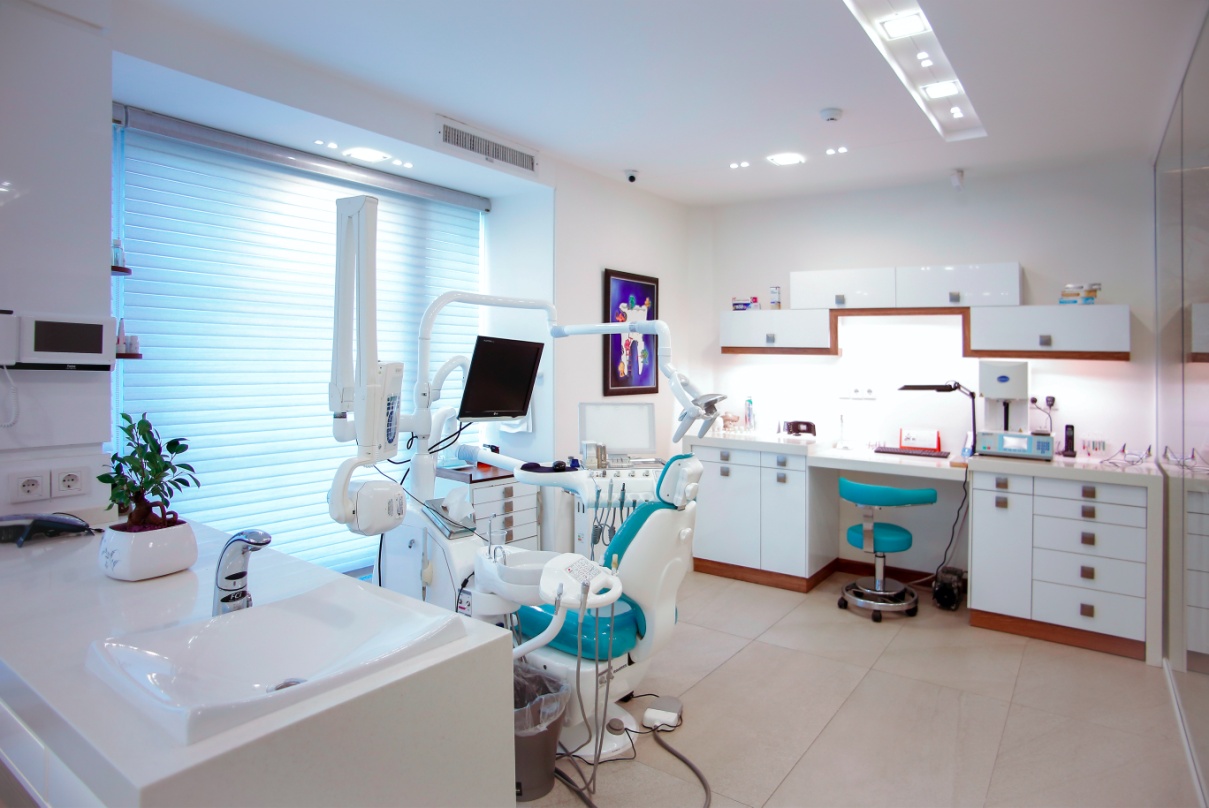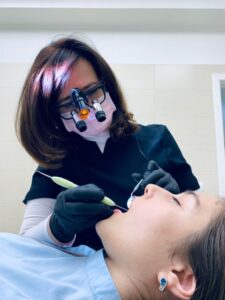Who Needs Restorative Dentistry?
Certain medical conditions require restorative dentistry to allow you to perform everyday tasks like chewing and biting without any pain or hindrance. These are:
- Tooth decay
- Cavities
- Damaged/chipped teeth
- Receding gum line
- Missing teeth
- Incorrect bite (TMD)
Types of Restoration Dentistry Procedures
There are several different types of restorative dentistry procedures. These include:
Tooth Fillings
When the bacteria in your mouth wears the enamel off on your teeth, it can cause a hole that continues to grow deeper if not treated and eventually cause tooth decay. If you have a small cavity, your dentist will remove the decayed part of your tooth and will fill it up with tooth fillings to stop it from progressing.
With technological advancements in dentistry, tooth-colored composite fillings are available that don’t stand out and mix with the color of your teeth.
Dental Crowns
If your cavity has grown deeper that a filling won’t do, or if you’ve chipped your teeth in an accident, your dentist will cover your teeth with a dental crown.
A dental crown sits on top of the teeth to make it easier for you to eat and chew, and make your teeth look even. However, to place the crown, the dentist will have to shave some parts of your teeth off.
Inlays and Onlays
When a cavity is too small for crowns but too big for fillings, your dentist may recommend you get an inlay/only. These are custom restorations that fit the natural structure of a tooth and are bonded to it using glue or a solution. The inlays/onlays cover the areas missing due to the cavity and fit perfectly.
Root Canal
If a cavity isn’t caught early, it can progress from the outer teeth to the pulp. If the bacteria reach the pulp of your teeth, they can cause a painful infection that requires a root canal.
In this procedure, the dentist will remove the infected pulp along with the damaged blood vessels and nerves due to the infection. The wound and the infected area will be thoroughly cleaned and your dentist will then cover the cavity with a filling to restrict the bacteria from entering the pulp again.
Usually, a crown is also used to provide support to the tooth that underwent a root canal because it gets weak.
Dental Bridges
A dental bridge replaces a missing tooth or teeth. They are artificial teeth with a crown on top that can fit on your gumline to maximize the functionality of your teeth and allow you to chew, eat, and speak easily.
These dental bridges are bonded to your natural teeth with the help of glue so that they stay in place. This requires shaving down your existing teeth a little to fit the bridges on top of it.
Dental Implants
A dental implant is a small rod that goes into your gum with a crown on top of it to emulate a tooth. Dental implants are strong and permanent replacements for missing teeth.
A dental implant can easily be restored by replacing the crown on top of the post that sits in your gums. It also doesn’t require any kind of alteration to your natural teeth, which is why it’s considered one of the most effective restoration techniques.
Dentures
Dentures are another convenient option for replacing missing teeth. Full dentures replace a whole arc of teeth, for example, the upper or lower arch. Partial dentures are also available to replace a tooth or two.
Dentures are fitted on the gums and are supported by the jawbone. You can also choose to get implant dentures. Implant dentures are permanently fixed to your gums using posts or rods of metal, unlike conventional dentures that just rest on the gums.
If you have oral pain, cavities, or chipped/damaged teeth, consult our dentists near Woodland Hills at West Hills Smiles.
We are a dental care center that offers all sorts of restorative dentistry services, including dental implants, root canals, tooth fillings, dental crowns, and more. We also offer cosmetic dentistry services, like professional teeth whitening, gum reshaping, anti-aging dentistry, and more.
Reach out to us right away to book your appointment.







